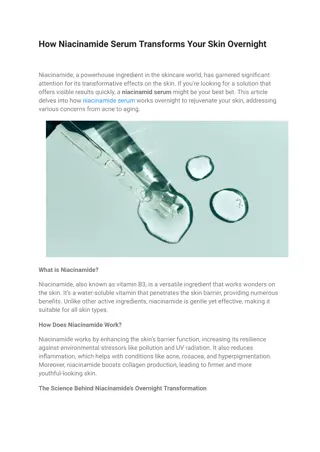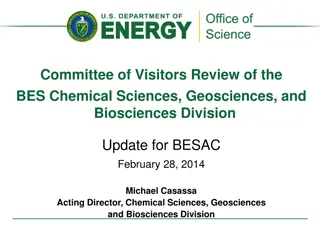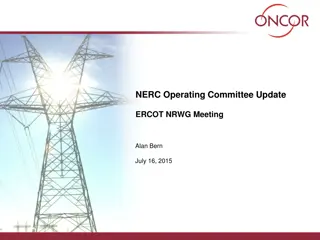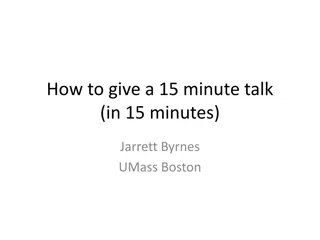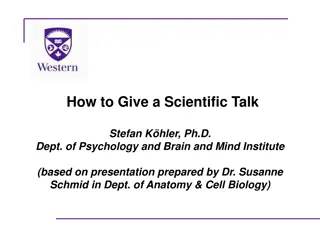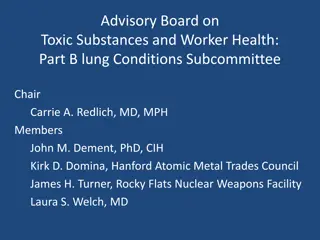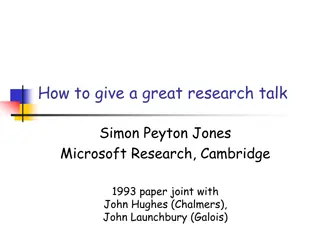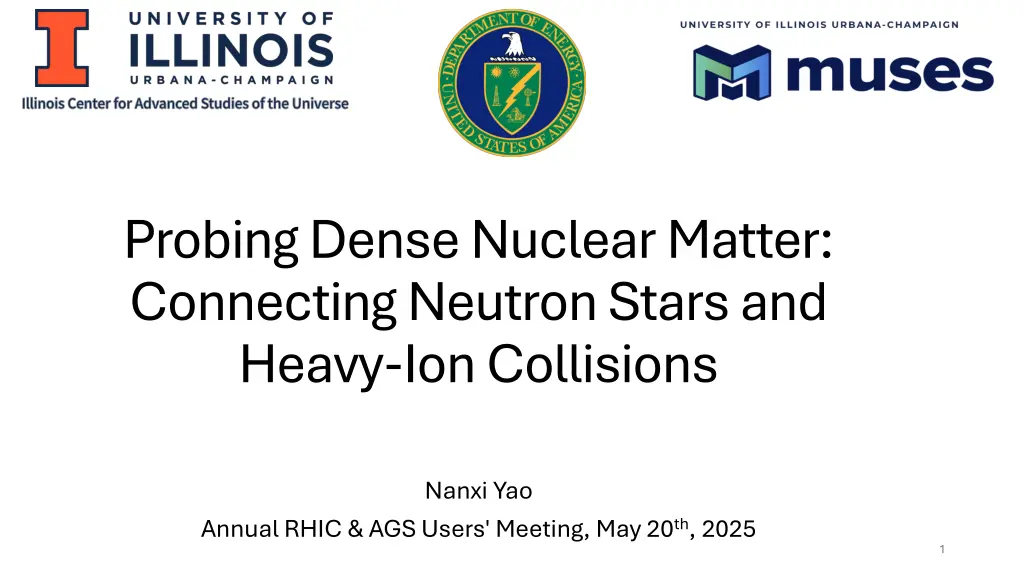
Connecting Neutron Stars and Heavy-Ion Collisions
Explore the connection between neutron stars and heavy-ion collisions through probing dense nuclear matter. Topics include the nuclear equation of state, symmetry energy expansion, and constraints on the equation of state. Discover how insights from neutron stars can inform our understanding of dense matter in heavy-ion collisions.
Download Presentation

Please find below an Image/Link to download the presentation.
The content on the website is provided AS IS for your information and personal use only. It may not be sold, licensed, or shared on other websites without obtaining consent from the author. If you encounter any issues during the download, it is possible that the publisher has removed the file from their server.
You are allowed to download the files provided on this website for personal or commercial use, subject to the condition that they are used lawfully. All files are the property of their respective owners.
The content on the website is provided AS IS for your information and personal use only. It may not be sold, licensed, or shared on other websites without obtaining consent from the author.
E N D
Presentation Transcript
Probing Dense Nuclear Matter: Connecting Neutron Stars and Heavy-Ion Collisions Nanxi Yao Annual RHIC & AGS Users' Meeting, May 20th, 2025 1
Outline of the Talk Introduction of Nuclear Equation of State (EOS) Isospin-asymmetry Expansion of the Nuclear EOS from Chiral Effective Field Theory(CEFT) Converting Neutron Star(NS) EOS to HIC using Symmetry Energy Expansion Probing Dense Matter from pQCD
PhaseDiagramof Nuclear Matter Kumaret al. arXiv:2503.23413 3
NuclearEquationofState (EOS) Todescribe the relationshipbetween MUSES Collaboration. Rajesh Kumar (Kent State U.) et al. 2303.17021. properties ofnuclearmatter (e.g. energy density, pressure) andquantifiesthe structure ofdifferent nuclearmatter andthe interactions Constraining the EoS: Two regimes of reliability Low Density (~n to 2n ): Chiral Effective Theory (CET) High Density ( 40n ): Perturbative QCD (pQCD) M-R constraintsonthe right fromT=0NS EOS 4
C. Wellenhofer, J. W. Holt, N. Kaiser. Phys. Rev. C 93 (2016), 055802 IsospinexpansionofnuclearEOSwith ??? Free energy per particle: F(T, , ), ? = (?? ??)/? Use second-order many-body perturbation theory with ??? interactions. N3LO (2-body) and N2LO (3-body) interactions = 414 ?? 450 ??? Cutoffs (n3lo414 and n3lo450 sets) Extract coefficients numerically via finite-difference methods. 5
C. Wellenhofer, J. W. Holt, N. Kaiser. Phys. Rev. C 93 (2016), 055802 At high temperature and low density At high temperature and low density: Coefficients follow ?2> ?4> ?6>.., the expansion is convergent convergent. At low temperature and high density At low temperature and high density: Coefficients become ?2 ?5 ?6 .., ,indicating the expansion becomes divergent divergent. The strongly divergent behavior of the higher-order Maclaurin coefficients arises solely from the second-order many-body contribution. Extracted a leading nonanlytic correction ?4ln|?|. Promising direction: reparametrize the expansion in terms of the proton fraction ??= 1 ? 2 6
IsNScompatiblewithHICdata? Determination of the equation of state of dense matter. Danielewicz et al. Science 298 (2002), pp. 1592 1596. Analyzes flow of matter in nuclear collision Obtain predictions for EOS of neutron matter Observations of GW190814 Previous studies: EOS of NS with mass >2.6 ? not consistent with HIC data (F. J. Fattoyev et al. Phys. Rev. C 102 102, 065805) Assumed hadronic degrees of freedom 7
D. Oliinychenko, A. Sorensen, V. Koch, and L. McLerran, Phys. Rev. C 108, 034908 (2023) IsNScompatiblewithHICdata? Cold neutron stars (NS) equations of state (EOS) can sustain heavy neutron stars over 2 ? Need large, rapid rise in the speed of sound (??2) We want to investigate this with NS EOS where we add a bump to ??2 associated with higher-order repulsive terms in the description of the strong force among nucleons and hyperons Quarkyonic matter, deconfinement crossover phase transition, new hadronic degrees of freedom 8 L. McLerran and S. Reddy, Phys. Rev. Lett. 122, 122701 (2019)
Neutron Star EOS of Interest Easily create a family of EoSs that reach M 2.5 ? , either by implementing a narrow peak at low ??or a wide peak at higher ?? EOS 1 extreme heavy NS 3.0 EOS 2&3 consistent with most of the experimental data GW190814 2.5 H. Tan, J. Noronha- Hostler, and N. Yunes, Phys. Rev. Lett. 125, 261104 (2020) J0740+6620 2.0 M [M ] J0030+0451 GW170817 1.5 1.0 (a) 0.5 10 11 12 13 14 15 R [km] 9
Pure Neutron Matter ??=0 HIC vs Neutron Star NS is asymmetric nuclear matter(ANM), and HIC is symmetric nuclear matter(SNM) ??,??? ??,???/?? J. Roark and V. Dexheimer. PRC 98 (2018). Cold NS are at T=0 and contain few positively charged particles ??,??? is dependent on ?? and 0.1 for NS, ??,??? for HIC is 0.38~0.5 Example: for Au, ??=79/197=0.4 10
SymmetryEnergyExpansion Energy per nucleon E(n,?) is the most basic term used to obtain EOS of NS, regardless of model used n baryon number density, ? isospin asymmetry ?=1-2?? E(n,?) has a symmetry energy term ???? which quantifies the energy needed to make nuclear matter more neutron rich 2 3)?2 ???? 3 ???? 18 ???? 162 ?? ?0 1 + ?? ?0 1 ?? ?0 1 ????(n,?) = ????? (????,0+ Magnitude of the symmetry energy: Esym(n = nsat), 31.7 3.2 MeV1 Slope: Lsym 3n dn Curvature: Ksym 9n2d2Esym dn2 Skewness: Jsym 27n3d3Esym dn3 + dEsym n = nsat, 58.7 28.1 MeV1 or 106 37 MeV, PREXII n = nsat, 120 100 +80 MeV2 n = nsat, 300 500 MeV3 1M. Oertel et al. Rev. Mod. Phys. 89, 015007 (2017) 2W.-J. Xie et al, Astrophys. J. 899, 4 (2020) 3I, TEWS et al. Astrophys. J. 848, 105 (2017) 11
NuclearSymmetryEnergyExpansion For HIC, we do not have perfectly symmetry nuclear matter ??,???= 0.39 Thus, we obtain the asymmetric energy density for HIC from symmetric energy density through a double expansion: ???? = ??? 4 ????,0+???? 2 3 1 +???? +???? 162 ?? ?0 ?? ?0 ?? ?0 ?????? ? ????? ??,????? 1 1 ] (??,??? + ??,??? ?? ??,??? ?? 3 18 12
Phys. Rev. C 109, 065803 Conversion Process Input: NS beta-equilibrated EOS at T=0 with a bump at speed of sound -3 p (MeV fm ) 100 200 300 400 500 600 700 0 A range of symmetry energy coefficients 0 200 Subtract lepton contribution: ????= ?- ???? CMF converted with original Y original CMF HIC EOS CMF converted with Y Convert ????with symmetry energy expansion 400 600 Q,QCD 2?(?/??) ??? Calculate pressure via p = ?? 800 (vary J) e P (MeV fm 1000 Calculate ??2=d? ?? ) -3 13
2 s c 0.8 Phys. Rev. C 109, 065803 0.2 - 0.2 0.4 0.6 1.2 0 1 0 Converted EOS Band 1 2 3 EOS 2 NS EOS Converted at ??,??? Same location of the peak, shifted magnitude ????? = 0.5 4 5 Constraints on the converted EOS: Bn sat /n Stability and causality (??2> 0 for ?? 0.9???? and ??2< 1) Saturation properties 6 0.14 ?? 3< ????<0.18 ?? 3 18 MeV < B < -14 ??? 14
Phys. Rev. C 109, 065803 Symmetry Energy Coefficients 30 < Lsym< 50 ??? ?sym < 0 ASY-EOS?????????????????????? FOPI-LAND Tsang?et? al. Lynch,?Tsang Drischler?et?al.?(1 ) eos2?(2 ) eos2?(1 ) ??? ??? ??? ??? ??? ??? ??? ??? ??? ??? 0.5 ??? ??? ??? ??? ??? ??? ??? ??? HIC(isodiff) HIC(n/p) HIC( ) D mass(Skyrme) IAS mass(DFT) PREX?II 60 symmetry?energy?Esym?[MeV] 50 40 30 20 10 0 0 1 1.5 2 2.5 baryon?density?nB/n0 15
Phys. Rev. C 109, 065803 Comparison with HIC experimental data To ensure ?/?? ?? and ??2 0 as ?? 0, match the converted EOS to an EOS obtained from the density functional (VDF) model. EOS with sharp rise at EOS with sharp rise at 2 2?? is favored by the is favored by the flow data flow data 0 . 7 0 . 7 0 . 7 d y ' ( y ' = 0 ) 0 . 6 0 . 6 0 . 6 d y ' d y ' 0 . 5 0 . 5 0 . 5 p r o t o n d v1 / p r o t o n d v1 / p r o t o n d v1 / 0 . 4 0 . 4 0 . 4 0 . 3 0 . 3 0 . 3 0 . 2 0 . 2 0 . 2 0 . 1 0 . 1 0 . 1 0 0 0 0 . 0 5 0 . 0 5 0 . 0 5 p r o t o n v2 ( y = 0 ) p r o t o n v2 ( y = 0 ) ST AR e o s1 mi n e o s1 ma x p r o t o n v2 ( y = 0 ) ST AR e o s2 mi n e o s2 ma x 0 0 0 0 . 0 5 0 . 0 5 0 . 0 5 HADE S HADE S HADE S ST AR e o s3 mi n e o s3 ma x 0 . 1 0 . 1 0 . 1 0 . 1 5 0 . 1 5 0 . 1 5 2. 5 3 3. 5 4 4 . 5 2. 5 3 3. 5 4 4 . 5 2. 5 3 3. 5 4 4 . 5 sNN [ Ge V] sNN [ Ge V] sNN [ Ge V] 100 1 1 1 pressure?[MeV/fm3] e o s1 mi n e o s1 ma x e o s2 mi n e o s2 ma x e o s3 mi n e o s3 ma x 0 . 8 0 . 8 0 . 8 2] 2] 2] 0 . 6 0 . 6 0 . 6 2 [ c 2 [ c 2 [ c 10 c s c s c s 0 . 4 0 . 4 0 . 4 eos2?min eos3?max EFT?Drischler?et? al.?68%?CI Oliinychenko?et? al.?68%,?95%?CI Danielewicz?et? al. 0 . 2 0 . 2 0 . 2 0 0 0 0 1 2 3 4 5 6 0 1 2 3 4 5 6 0 1 2 3 4 5 6 nB [ nsa t] nB [ nsa t] nB [ nsa t] 1 1 2 3 4 5 16 baryon?density?nB/nsat
Mroczek et al.arXiv:2404.01658. TemperatureExpansion? "Finite-temperature expansion of the dense-matter equation of state. Expansion of EOS of dense matter from pure neutron to isospin symmetric nuclear matter, from 0 to finite temperatures (up to T =100 MeV) Model independent Provides a thermodynamically consistent and uncertainty-quantified 3D EoS, enabling simulations of neutron star mergers and connections to HICs. ?2? ??2?=0, ?+ 1 ?3? ??3?=0, ?+ ?(?4) ?? ???=0, ?? +1 ? ?, ? = ??=0+ 2 6 17
Coupled with EOS from Modified Gaussian Process(In Progress) Takes 100,000 NS EOS generated with modified Gaussian process meet the requirements informed by GW190817 and PSR J0030+0451, mass cut ???? 1.8 ? Apply symmetry energy expansion on these NS EOS with causality/stability constraints applied 18
T. Gorda and S. Sppi. Phys. Rev. D 105, 114005 Probe Dense Nuclear Matter Using pQCD with Soft Quark Masses A simplified approximation method for thermal QCD calculations that includes finite quark masses, valid when quark masses are small compared to the chemical potential or temperature, i.e., ? = ?(??) or ? = ? ?? . Relevant to the regime of NS and NS merger as well as HIC. The assumption of soft masses allows us to treat the quark-mass term in the Dirac Lagrangian as a perturbation and expand expressions about the massless limit Expanding in the masses allows us to consider significantly simpler loop integrals 19
T. Gorda and S. Sppi. Phys. Rev. D 105, 114005 For hot quark-gluon-plasma: 20
Conclusion & Outlook CEFT Isospin expansion, works well for high temperature and low density Extracted nonanalytic term, useful for modeling NS NS could serve as high density boundary conditions to help constrain ?2?, which in turn constraints HIC Symmetry Energy Expansion EOS with a bump at the ??2 compatible with HIC data Further constrain symmetry energy coefficients 3D expansionin T BayesiananalysiswithmodifiedGaussian processes pQCD: Perturbative treatment of soft quark masses Realistic modeling of dense nuclear matter with strangenessand leptons 21
Mroczek et al.arXiv:2404.01658. TemperatureExpansion? "Finite-temperature expansion of the dense-matter equation of state. Expansion of EOS of dense matter from pure neutron to isospin symmetric nuclear matter, from 0 to finite temperatures (up to T =100 MeV) Model independent can be used to describe neutron star mergers and core-collapse supernova explosions ?2? ??2?=0, ?+ 1 ?3? ??3?=0, ?+ ?(?4) ?? ???=0, ?? +1 ? ?, ? = ??=0+ 2 6 Mroczek et al.arXiv:2404.01658. 23
ComparisonwithHICdata At lower ???, we have very high ??and lower ?max Interplay between the QGP phase and the hadrons Best described by hybrid models - relativistic hydrodynamics with a hadronic transport. Current relativistic viscous hydrodynamic calculations coupled with the hadronic transport code SMASH provide a reasonable description of particle production down to ???, = 4.3 GeV (???? = 8 AGeV) use mean-field potentials dependent on vector baryon density No complex temperature dependence 24






